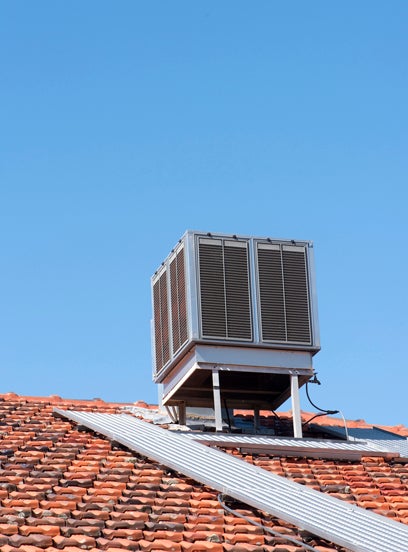
Where the air is dry, evaporative coolers can provide cooling less expensively than operating an air conditioner. They are most common in desert areas with arid climates like in the Southwest where many homes use them. Evaporative coolers work because when dry air absorbs moisture, its temperature is lowered. They cost about half as much to purchase as conventional air conditioners and one quarter as much to operate.
The two most common types of evaporative coolers are single-stage and two-stage. Single-stage or direct-type coolers are the most common. They consist of a large fan and absorbent pads to hold the water. The temperature of the outside air is reduced by about 20 degrees as it is pulled through the wet pads by a fan and blown into the home. Two-stage coolers are more complicated, more expensive, and only used where daytime temperatures regularly surpass 100 degrees F.
Besides lower operative costs, another advantage of evaporative coolers is they don't require as much power as air conditioners. You can plug most evaporative coolers into a 120-volt wall outlet. Only larger units require special wiring.
Unlike air conditioners, you must keep at least one window open when an evaporative unit is running to let some air escape and make way for the cooler air to blow in. Depending which window you open, you can direct the cooler air. Some people open an attic hatch to allow air to escape into the attic, but only if sufficient attic venting is installed.
